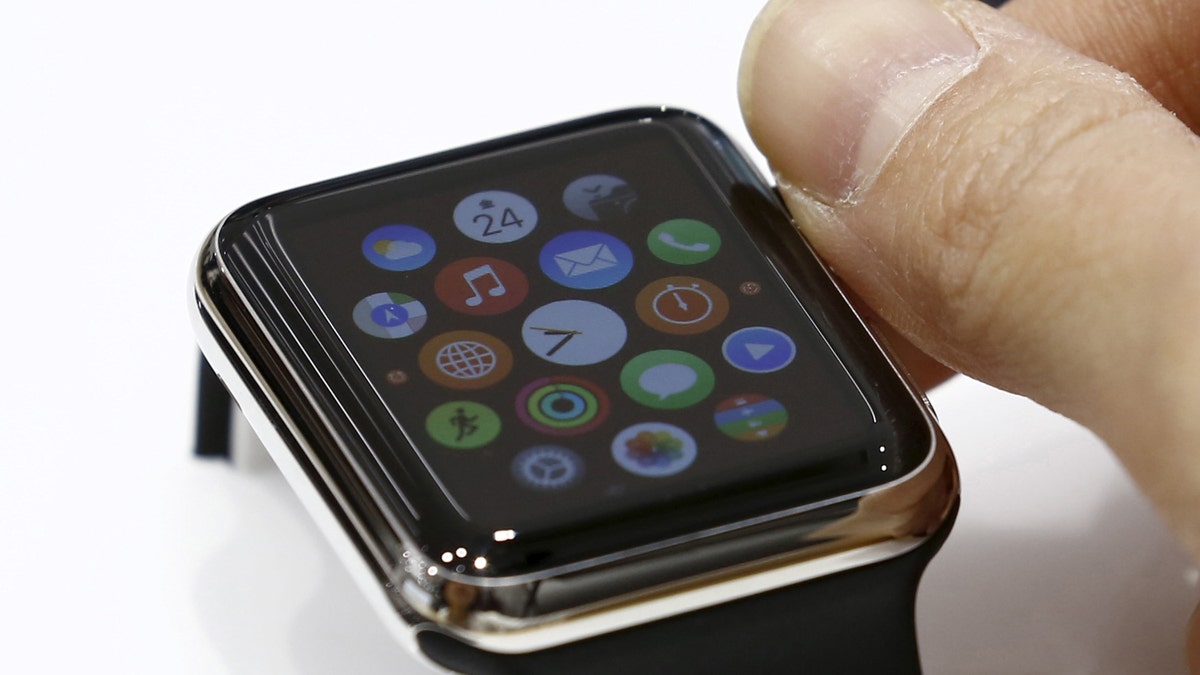
File photo - A woman uses Apple Watch that is on display at an electronics store in Omotasando in Tokyo April 24, 2015. (REUTERS/Thomas Peter)
On paper, Apple Wallet sounds like the end of the credit card swipe. In the real world, it’s a work in progress.
Wallet – formerly Apple Passbook – still has to contend with a world that’s not quite ready for Wallet. I’ve been using Wallet on my Apple Watch and found convenience to be elusive at times.
But before I delve into my own experience, let’s look at a survey that came out earlier this year.
Related: Apple unveils iPad Pro, new iPhones, revamps Apple TV
After Apple Pay – the service behind Wallet – went live on Oct. 20 last year, within four months the adoption rate was 66 percent of iPhone 6 owners, according to Phoenix Marketing International, which surveyed 3,002 credit cardholders. And 88 percent of those setting up the wallet went on to use Apple Pay to make an in-store or in-app purchase.
“However, the early-on transaction potential is being undercut by low repeat usage and lost payment opportunities,” Phoenix said in a summary of the survey posted earlier this year. While 59 percent of Apple Pay users tried to make a purchase with Apple Pay, 47 percent visited a store that was listed as an Apple Pay merchant only to find out that the store did not accept it.
To make matters worse, even for stores that accepted Apple Pay, there were hurdles. Two-out-of-three Apple Pay users reported a problem at checkout, “mostly related to terminals not working or taking too long to make the transaction, inaccurate posting of transactions and the inability of cashiers to help buyers who needed assistance in using Apple Pay,” according to Phoenix.
Related: An iPhone 6 that stays charged for a week? New tech may be on the way
Because the survey was posted in the early spring, the situation has undoubtedly improved. And, indeed, my experience has been more positive. That said, I haven’t been using the Watch and Wallet at every Apple Pay store under the sun. So, let me focus on two national store chains where I use the Watch to pay consistently on both the east and west coasts.
While Starbucks is not an Apple Pay vendor, in practice it works like Apple Pay and is the most consistently easy experience. Load the Starbucks barcode into Apple Wallet and you’re ready. Just a flash of my Watch’s Starbucks barcode at the reader and it’s done. That makes the payment easier than a credit card swipe. Importantly, the experience doesn’t vary from store to store. And using the Watch is also easier than hauling my iPhone out of my pocket. So it’s a double convenience win. Also, Starbucks card reloads are done automatically.
Whole Foods is not as consistent. For example, I’ll make a purchase on my Watch at one Whole Foods store (e.g., over $100) where my signature isn’t required but if I go to another store and make more or less the same purchase, my signature is required. In yet other Whole Foods, I have to input my bank pin. In effect, rendering the experience no different than swiping your credit card (in the latter case). Moreover, the cashiers aren't consistently savvy about how to use Apple Pay at Whole Foods.
Related: Apple claims it literally can't even hand over encrypted data to the FBI
The moral of the Whole Foods story is that the inconsistency can be a deterrent when you know the traditional card swipe is consistent and pretty much the same convenience.
“[The] NFC acceptance network still has a long way to go,” said Phoenix in its post. And the inconsistency is a deterrent for users. A whopping 48 percent of users paid with Apple Pay just one time then stopped, according to Phoenix. I’m not stopping, though.




















